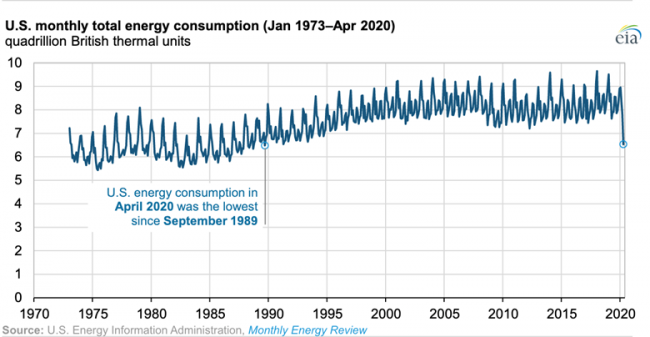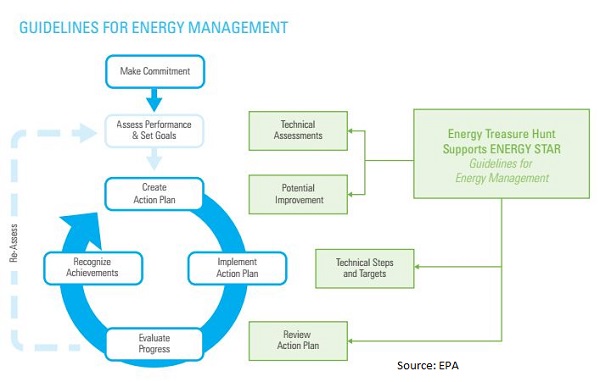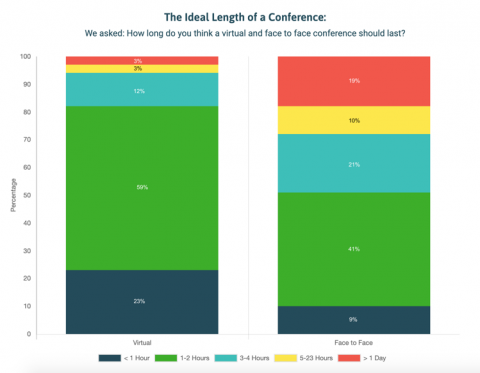

By Arjun Mehra | Tue, December 15, 20
COVID-19 has impacted nearly every industry around the world, so it's no surprise that the energy efficiency industry has been significantly impacted as well. For energy efficiency programs in particular, COVID-19 has created many challenges (and some opportunities), which can be seen in recent changes to the implementation of SEM programs.
In recent years, strategic energy management (SEM) has emerged as a key tool across the United States to reduce energy usage and increase operational efficiency, particularly by aligning energy efficiency with the economic goals of commercial, industrial and municipal facilities. SEM has been used extensively in the Northeast, with Vermont and New York among the first to introduce SEM programs for industrial and wastewater treatment facilities in 2014 and 2015 respectively. Since then, the U.S. Department of Energy (U.S. DOE) has introduced the 50001 Ready program, which provides institutions with a framework for SEM that aligns with the ISO’s 50001 Standard.
Recently, the disruption caused by COVID-19 has forced SEM programs around the world to adapt to a virtual format, which has resulted in participant dropout due to the unexpected challenges associated with this endeavor. Despite this and other setbacks, most have managed to keep their SEM programs up and running thanks to creative solutions like virtual treasure hunts and re-prioritizing program needs. NEEP captured the impact of COVID-19 on Northeast SEM programs (and a couple national programs) during a recent SEM webinars. Here are some key takeaways:
Challenges
Decline in energy use and savings
The drastic decrease in energy use due to limited demand has had a notable impact on some SEM programs. (The EIA expects a 4.7 percent drop in commercial energy use accompanied by a 4.3 percent decline in industrial energy demand in 2020.) Despite these large drops in both sectors, the New York State Energy Research and Development Authority (NYSERDA) reported that while industrial and wastewater SEM programs have been proceeding on schedule, several commercial SEM programs have been put on hold. This was partially due to the steep decline in commercial building energy use in the Northeast which led to a six percent decrease in commercial electricity prices compared to 2019. The decrease in building energy use lowers the total building energy cost and the monetary value of savings. Since most organizations have employees working from home, management has little interest in adopting SEM programs for workplace energy efficiency.
Adapting Level 1 SEM Activities to Virtual Formats
Additionally, it was noted that COVID-19 has significantly impacted the viability of Level 1 activities that typically involve in-person workshops that familiarize customer organizations with SEM practices. Employee and management training workshops that are essential to introducing the organization to the ISO 50001 standard have had to be adapted to online formats. Another component of Level 1 activity - treasure hunts - which are in-person site inspections to identify easy energy savings opportunities were temporarily put on hold at the onset of COVID-19, but representatives from many Northeast states stated that they had begun exploring virtual treasure hunt options.
Performance Evaluation
Based on information garnered from the webinar, it was clear that delays caused by Level 1 activities reverberated throughout entire SEM programs, halting data collection and analysis and creating SEM program bottlenecks. This subsequently led to the inability to set objectives, as significant energy uses (SEU) and performance indicators could not be identified. Additionally, the disruption in usage trends caused by the COVID-19 pandemic made it difficult for participants to accurately evaluate their energy savings. Without a comparable benchmark, it is generally difficult to assess the effectiveness of an SEM program even if all the requisite boxes have been checked.
Refurbishment/ Equipment change delays
Programs that involved any form of renovations or construction have had additional challenges associated with them. Since these are in-person transactions, several had to be stopped or postponed until required safety measures could be implemented. Once needed safety requirements were met, additional constraints also greatly slowed down any work, creating a backlog of jobs. Delays to equipment installations and replacements were also compounded by the interruption of conventional supply lines, which made it difficult to acquire necessary components. While these obstacles may seem daunting, SEM program providers managed to find innovative workarounds for many of them.
Opportunities
Expanding online resources
One of the first solutions that many Northeast states implemented in response to COVID-19 setbacks was the expansion of online resources for employee training to ensure the continuation of ongoing SEM programs. During the early stages of the pandemic, NYSERDA found it difficult to begin SEM programs virtually due to the depth of information involved. This is in part due to the fact that people want webinars to be significantly shorter than in-person workshops. This made it difficult to provide a comprehensive introduction to the principles of SEM.
The U.S. Environmental Protection Agency (U.S. EPA) Region 1’s Energy Star program shifted to online platforms, providing webinars to replace training workshops. This was effective, and they reported better attendance at their virtual training when compared to in-person seminars. Additionally, U.S. DOE improved functionality of its 50001 Ready Navigator by adding online resources and recently published a case study involving General Motors to provide further insight into the operations of industrial SEM programs during COVID-19 times. Similarly, the North American SEM Collaborative (NASEMC) will host its SEM Summit virtually this year.
Virtual treasure hunts & remote data collection
Many Northeast states shared many innovative ways to continue in-person ‘treasure hunts’ and data collection. One method involved sending site-inspectors at off-work hours, allowing them to inspect empty building and have employees join the process by providing a live-stream of the ‘treasure hunt’. This solution did not only minimize exposure, but also allowed employees to be part of the process. Some SEM providers have also switched to remote data collection in an effort to expedite the SEM process. The Pennsylvania Technical Assistance Program (PennTAP) adapted to this by designating an employee as an ‘energy champion’ and providing online training modules for them to conduct treasure hunts and data collection on their own.
Providing support pillars
Many SEM programs in the Northeast are generally very supportive of their customer needs, but since the pandemic, most states have gone out of their way to emphasize their availability to answer SEM-related questions or to assist with finding creative ways to realize continued savings. Vermont noted that it adapted to COVID-19 closures and reductions by ensuring that customer needs were met regarding emergency operation changes.
New Trends on the Horizon
While strategic energy management is typically reserved for business endeavors, principles from it can be applied to residential markets as well. As COVID-19 has forced people to spend more time at home than ever, this could attract interest in residential energy management programs. Coupling automated demand-side response through the use of smart thermostats with basic SEM principles such as installing efficient lightbulbs and improving insulation can lead to significant savings, even at a residential scale.
The repercussions from COVID-19 may create new usage patterns and needs across the board from residences to office, retail, education, health care and commercial/industrial space. Given the downtime and potentially extended economic effects of COVID-19, finding cost reductions for customers will become even more of a priority. Additionally, the challenges we have faced and may continue to experience could increase the need for flexibility and adaptability in our homes and businesses.
Some of the newer tools in the field will help facilities respond to greater complexity in usage patterns. For example, building automation systems will help utilities and customers personalize facilities to lower demand-side energy usage and reduce ownership and operating costs even as usage restrictions change. Utilities have also begun employing machine learning technology to optimize program efficiencies. This technology will help facilities adapt to maximizing energy efficiency under varying conditions.
Looking Ahead
While SEM programs have faced several obstacles since the start of the pandemic, those sudden obstacles may have ultimately forced acceleration in this industry. Some of the adaptions, such as the expansion of online resources and permitting, may likely be here to stay long after we find a vaccine for COVID-19 and could, in fact, change the face of the industry in the coming years. SEM programs in the Northeast have risen to the challenge admirably by adapting their systems and reorganizing their resources. With energy demand slowly trending upwards, the future for SEM in the Northeast region still appears to be bright.



